Lesson Objectives: In this unit, students will learn about monotheism as it distinguished ancient Israelites and their polytheistic neighbors. They will discuss the centrality of the first and second commandments to ancient and contemporary Judaism. During this unit’s hands-on project, students will make their own cylinder seals.
Guiding Thematic Questions:
- What are the first and second commandments?
- What is monotheism?
- In what ways is monotheism an important aspect of Jewish identity and practice?
Historical Context:
- There were many religions in the Ancient Middle East. Most of these religions were Polytheistic in nature, meaning multiple gods were worshipped. Some well known polytheistic pantheons include the Sumerian gods, Egyptian gods, ancient Greek and Roman pantheon, and Norse pantheon.
- Israelites were set apart from their neighbors by their religious practices. Ancient Israelite religion, however, was originally polytheistic, worshipping deities including El, Baal, Asherah, and Astarte. As their beliefs evolved, they became increasingly opposed to the worship of other gods and, at the beginning of the Babylonian captivity, a group of priests and scribes established the practice of monotheism– the conception of a singular Jewish God– as essential to Judaism.
- Many cylinder seals have images of ancient gods or animals. They are often made of precious materials, some of which were valued for being protective or healing. Most seals have a hole through their center, so that they might be worn on a necklace. Cylinder seals could function as a person’s signature.
- Incantation Bowls were used in ancient magic to protect against evil influences. Jewish incantation bowls from ancient Babylon often quote rabbinic texts and are written a form of Aramaic.
Fun Facts:
- In many polytheistic religions, deities were connected with animals. This is why votive statues and amulets often depict an animal in dedication to a specific god or goddess so as to bring the favor of that god to the person who owns it.
- According to 1 Kings 11:5, one of King Solomon’s wives followed Astarte, a goddess of war and love in ancient Phonecian and Canaanite cultures. Depicted on the cylinder seal in this unit is Astarte entering the underworld.
Object Images:
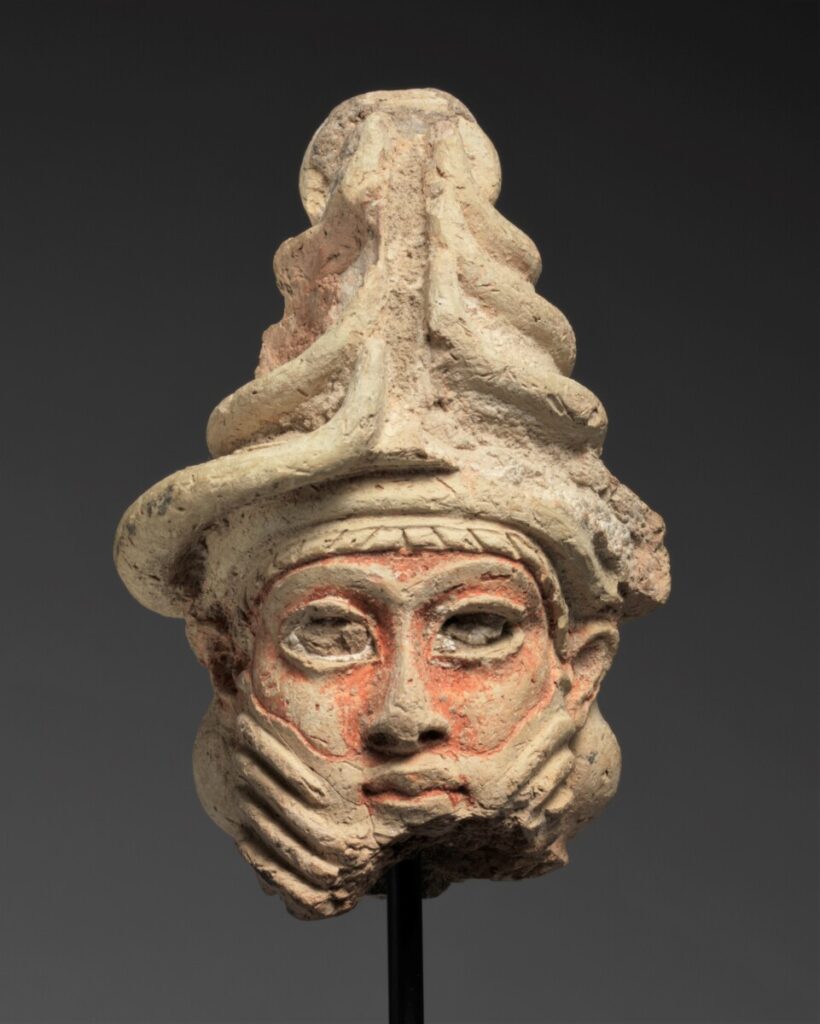
Head of Deity
Mesopotamian, Babylonian
1894-1600 BCE
Clay, pigment
4.5” tall
Carlos Museum, Emory University
2010.27.1
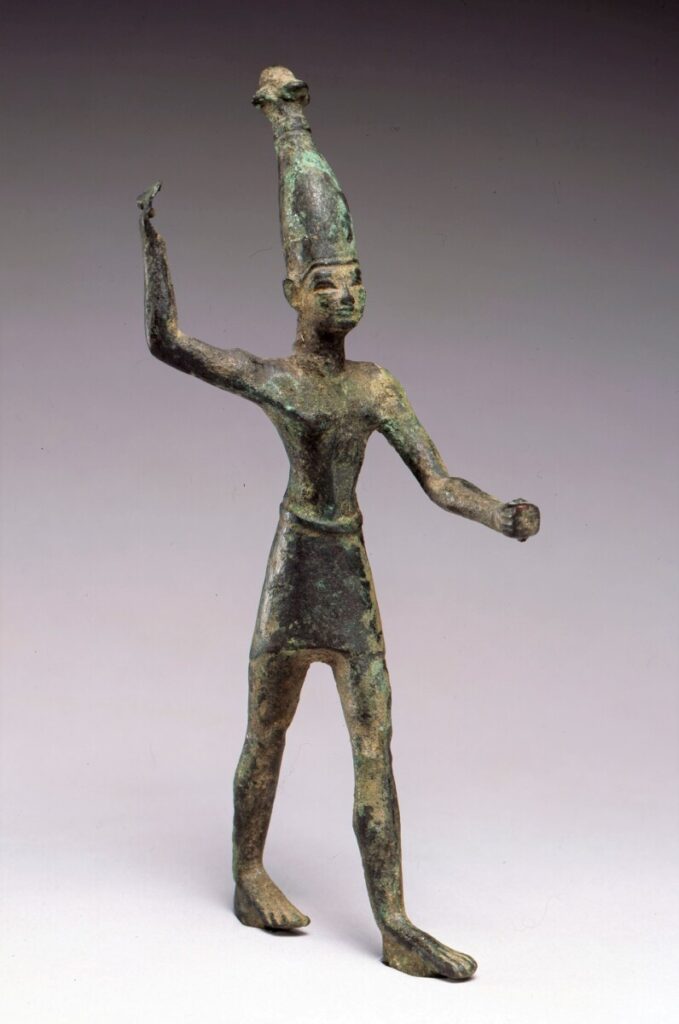
Smiting god (possibly Ba’al)
Canaanite
2000-1600 BCE
Bronze
7.5” tall
Carlos Museum, Emory University
2002.19.1
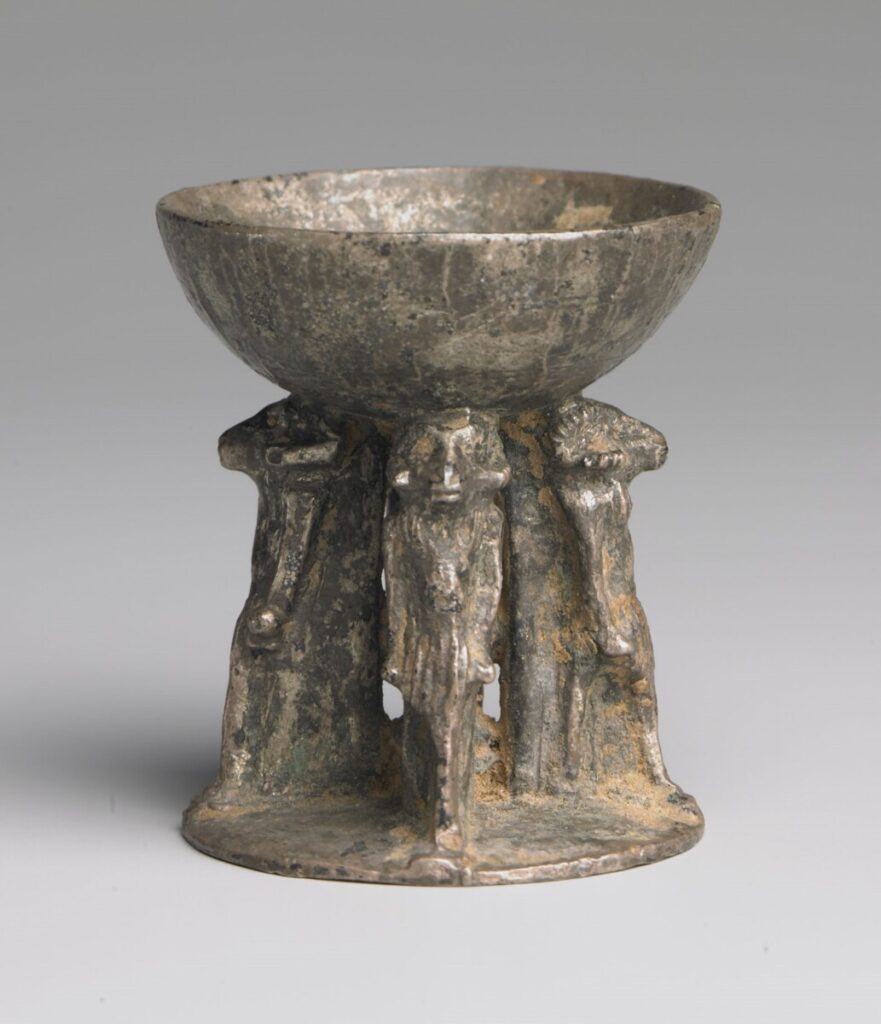
Altar with four figures of Ram-headed god
Phoenician
1st Millennium BCE
Silver
1.5” x 1.25”
Carlos Museum, Emory University
2008.28.1
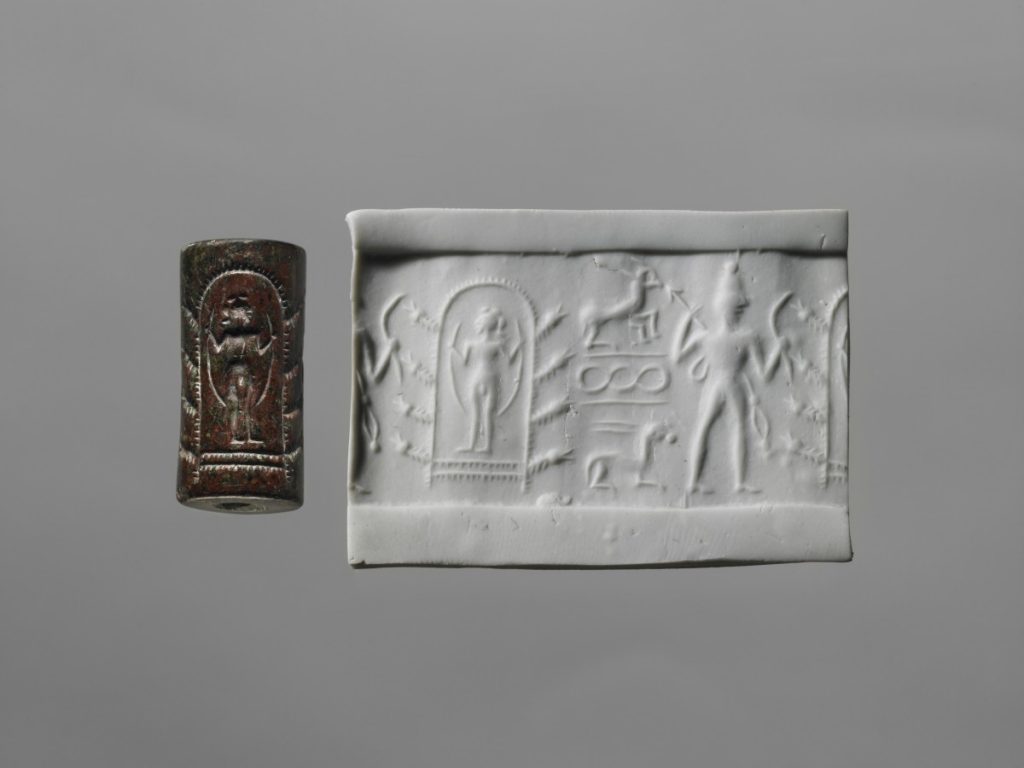
Cylinder Seal and roll-out impression: Astarte entering the underworld
2000-1600 BCE
Quartz (Jasper)
1.5” tall
Carlos Museum, Emory University
2008.43.1
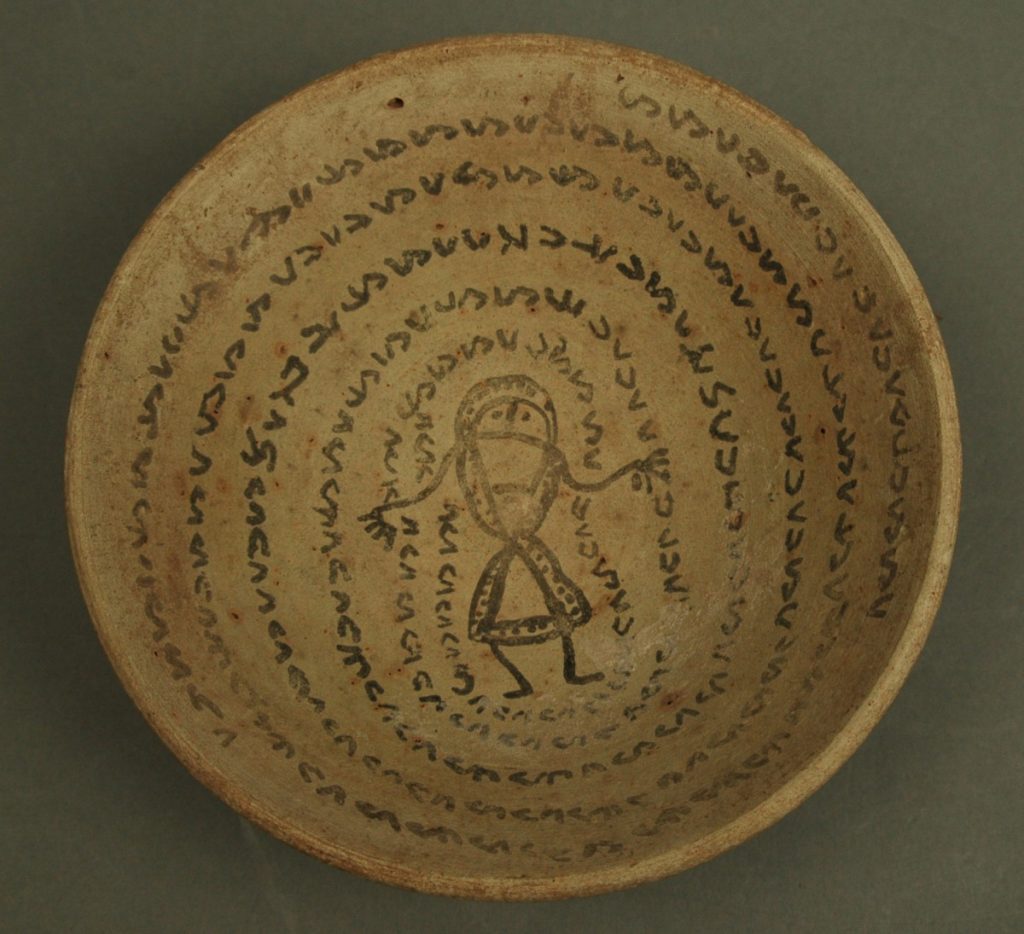
Incantation Bowl
600-651 CE
Ceramic
7” diameter
Carlos Museum, Emory University
2007.7.1
Classroom Discussion Questions:
What is the importance of the first commandment?
How was early Judaism different from other contemporary religions? How does modern Judaism compare with other religions today?
What are the 3 main monotheistic religions?
What are cylinder seals?
Project: Cylinder Seals
Materials:
- clay
- toothpick or other carving implement
- string (optional)
- play-dough/wet clay
Instructions:
- choose a symbol of Judaism, a family image, or another identifier for your cylinder seal. you can also choose more generic patterns for the design
- roll the clay into a cylindrical shape and carve your design with a toothpick or other implement. remember that the seal should be backwards so that when it’s rolled onto the clay it comes out facing the right way. you may poke a hole through the seal for threading a string through once it’s dried
- bake the clay in an oven according to instructions
- you may thread a piece of string through the seal if desired
- once dried, you can press the seal into wet clay to reveal your design